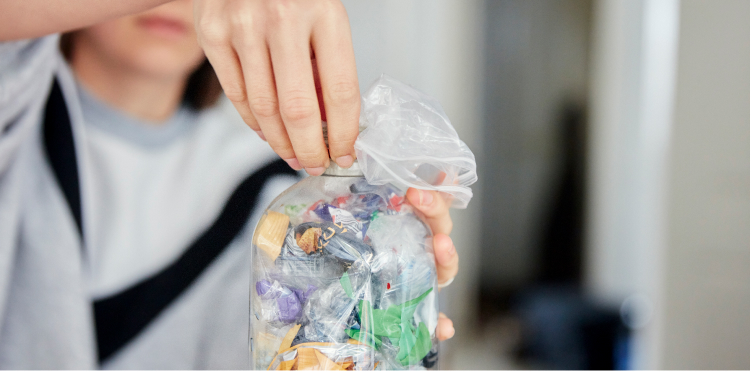Hyundai Motorstudio Senayan Park
Hyundai Motorstudio Senayan Park
Newsroom
The official news from Hyundai Motorstudio Senayan Park and a collection of innovative articles on mobility and sustainability here.
-
5 Easy Ways to Make Ecobricks, Under 5 Minutes
- Hyundai Motorstudio Senayan Park Senayan Park 2022.08.02
-
Ecobricks, or eco-friendly bricks, are a versatile product. If it is made with the right technique, the result will be much stronger and durable.
As we all know, plastic has now become a widely discussed global issue. There are not many solutions rather than by preventing it from the start, only by recycling if it has been produced or just thrown away.
Ecobricks are the most practical solution to overcome the plastic waste without complicated methods. Even with just a simple tool, such as a wooden stick, ecobricks can be made.
Advantages of Ecobricks
Apart from its durability, the main advantage of ecobricks is that they remove plastic from the biosphere. It is the layer of the earth from the surface to the atmosphere, where life exists.
Ecobricks free the biosphere from breaking down plastic and absorbing chemical compounds. The effects are damaging, from triggering soil degradation to damaging groundwater sources.
Another advantage, there is no need to build a recycling facility which sometimes triggers more pollution during the manufacturing process, and wasting energy to run the machine.
The ecobrick technique focuses on utilizing existing waste with minimal tools, so there is no cost at all. The majority of building projects that involve ecobricks are obtained from local communities, so costs and emissions can be reduced.
This is important because in an ideal world, there would always be enough plastic waste to make ecobrick. Making ecobricks is the same as reducing plastic waste, as well as being a fun activity to do on the weekends with your family.
How To Make Ecobricks?
If you are interested in making ecobrick for any purpose, the method is not as difficult as you think. Some of the materials and tools are bottles, plastic, scissors, wood, and paint if needed.
One difficulty may be in the process of collecting and cleaning plastic as the raw material for ecobrick. Here's the explanation of how to make ecobrick.
1. Clean and Dry Plastic Bottles
Any size of bottles aren’t matter as long as they're clean. Just avoid milk bottles because they are not designed to be durable. Make sure the plastic dries completely before starting the process.
Moisture or dirt will reduce their durability and strength. As much as possible, use bottles of the same size and type so the results are even wonderful when applied later. Especially if you want to apply ecobrick at home, choose the best color.
2. Collect and Clean the Plastic
Ecobricks are an alternative method to reduce plastic waste. Though, that doesn't mean you can be free to use plastic because it will be recycled into ecobrick. To produce the ideal ecobricks, use a mixture of hard and soft plastics.
Preparation can be done by cutting the plastic into small pieces to get more tightly. Any dirt, food residue or moisture in the ecobricks will break down over time and release methane.
As a result, the durability and stability of ecobrick is reduced. If you want to use bubble wrap, make sure to remove all the air first. The wind will leave a gap which will reduce the ideal weight of the ecobrick.
3. Get a Wooden Stick
You need a stick that is adequate to reach the bottom of the bottle, and must be strong because it will be used to press and compact the plastic inside. Wooden sticks or kitchen tools can be used.
Just make sure any sticks you use are dry and clean to prevent contamination with the plastic. Use whatever objects are around the house. The basic principle of ecobrick is to utilize whatever waste is surrounded, not to create new waste during the manufacturing process.
4. Playing the Color
Playing with colors makes the ecobrick look more aesthetic. If you want to make a color pattern, place blue plastic or other colors at the same position. The color pattern can be adjusted to the needs of the building project.
Put the plastic then press with a stick to make it more solid. Add a bit of soft plastic on top and press again. Especially if the ecobricks are for garden projects or house partitions, use color choices to get an aesthetic look.
Regardless of the color, a combination of thick and thin plastic or hard and soft plastic should be taken into consideration. Color is important, but the right combination will make it better for durability and strength.
5. Pack and Seal
The plastic to be put in the bottle had to be cut into small pieces first with scissors. This step is intended to avoid any gap when the ecobricks are finished. Be sure to mix thick and thin plastic so that the gaps are filled with each other. Push with a stick if you still see a gap.
Before sealing the ecobrick, be sure to meet the weight standards. For a 1,000 ml or 1 liter bottle, the recommended weight is 330 g. Less than that number makes ecobrick easier to dent and bend.
Finally, label each of the finished ecobrick. The label must contain information on the date, weight, and name of the project.




